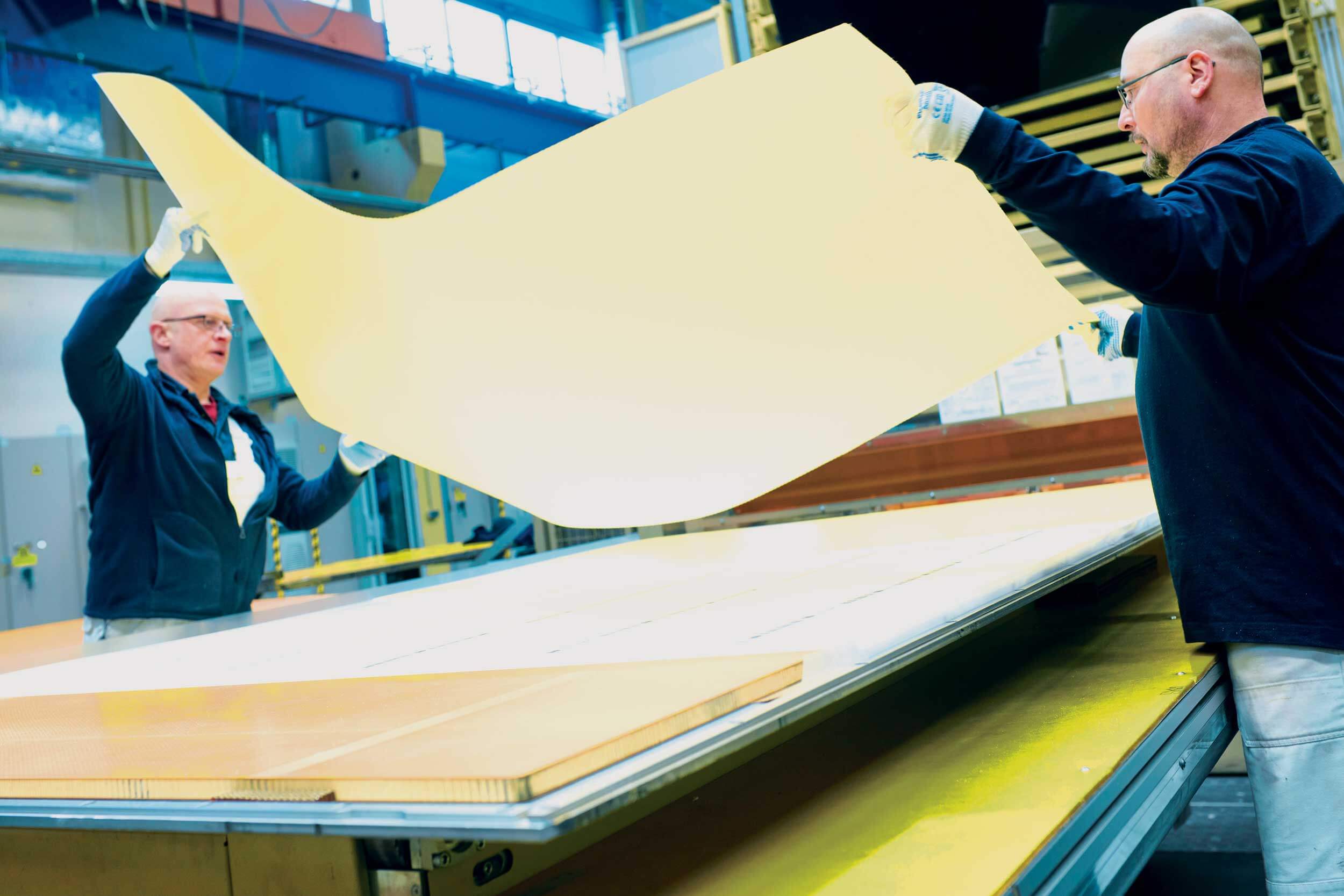Redelivered the world’s first A320P2F aircraft
Expanded MRO offerings with LEAP-1B quick-turn services and new distributorships for aircraft components
Increased freighter conversion capacity with new modification sites in China and the U.S.
Build up customer base for new MRO solutions and facilities
Ramp up freighter conversion capacity and optimise production at new conversion sites
Incorporate sustainable and smart features into operations and solutions for customers
The aviation industry gathered more momentum in its recovery from COVID-19 as travel restrictions across the world were further lifted, leading to the reopening of more routes. This provided the much needed lift for the MRO sector.
Increased demand for air travel and air cargo also spurred new aircraft orders and freighter conversions, signaling confidence in the sustainable growth of air travel and air freight post-pandemic. Aircraft OEMs including Airbus and Boeing reported year-on-year increases in deliveries on the back of air travel recovery which reached about 77% of December 2019's (pre-pandemic) levels by end 2022.
While the aviation sector experienced strong recovery, cost pressures remained a key concern as fuel and energy prices rose sharply during the year. Labour shortages and supply chain issues also continued to create near-term challenges for costs and capacity.
Amid these challenges, our Commercial Aerospace business continued its recovery trajectory by securing new contracts and delivering on orders. We also continued to invest in new capabilities and technologies as part of our plans to grow and futureproof our businesses.
Our Aerostructures and Systems business saw several new developments during the year that paved the way for continued growth. The manufacturing business recovered steadily as production rate improved in line with OEMs’ rising demands. Our freighter conversion business continued its story of growth. We also made new developments in the areas of aircraft modification and Unmanned Air Systems (UAS), bringing new and exciting solutions to the market.
We continued to ramp up the production volume of our biggest nacelle programme, the A320neo, according to the requirements of the OEM, Airbus, and increased production of the aircraft platform from the monthly rate of 45 units in 2021 to around 50 in 2022. Orders for our other nacelle product lines such as the Bombardier Global 7500 and Boeing 767 Tanker stayed at healthy levels during the year.
As the sole supplier of composite floor panels for Airbus’ commercial aircraft, our composite manufacturing activities also rose in tandem with increasing production by Airbus.
We continued to leverage our expertise in nacelle manufacturing and aftermarket services to offer new solutions when we took on the distributorship for the thrust reverser spare parts of CF6. This enabled us to provide reliable, round-the-clock component availability support to airlines and operators.
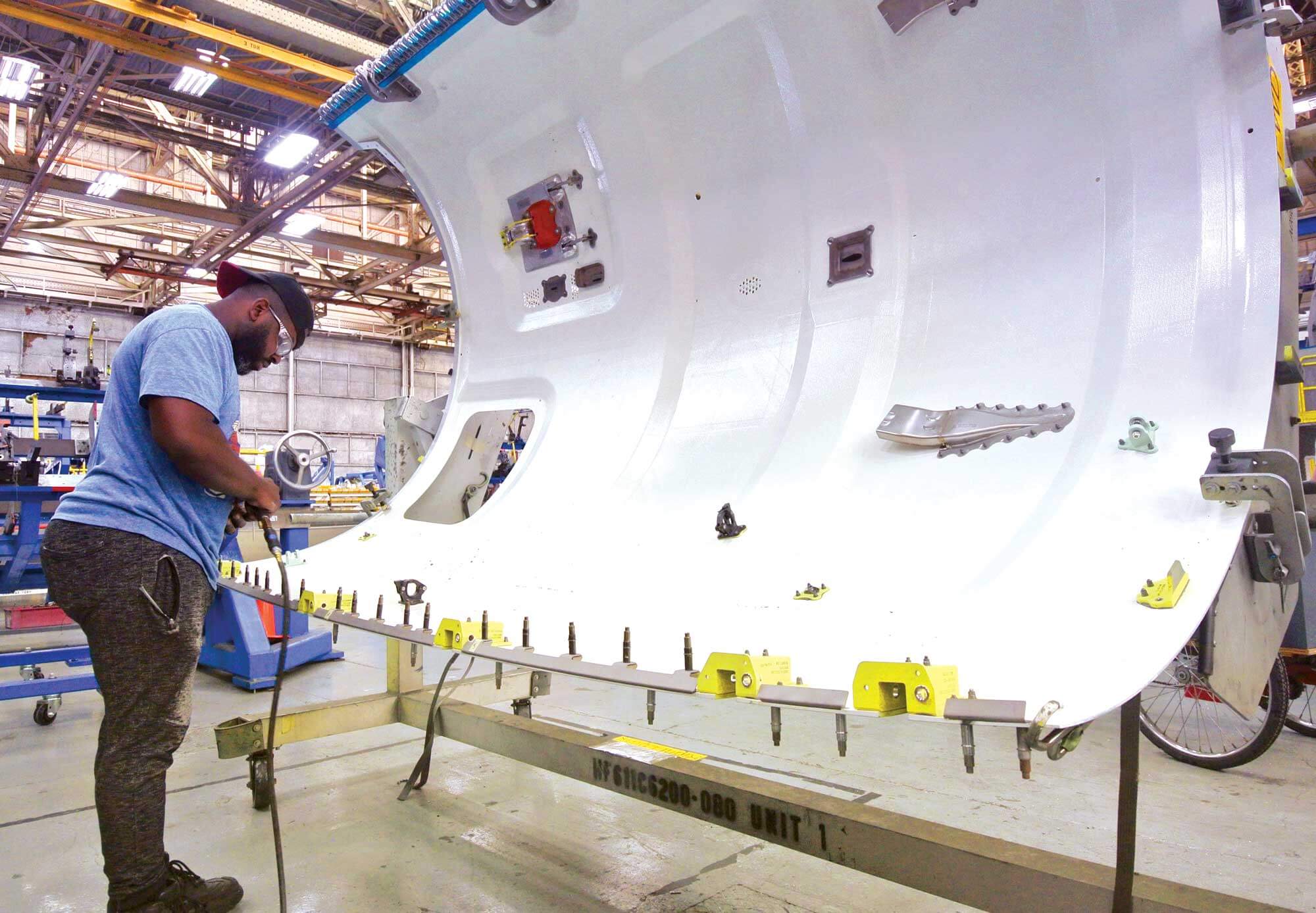
Amid global macroeconomic pressures, the air cargo industry ended the year strong with full-year demand for air cargo coming close to pre-pandemic performance. This translated into another solid year for our freighter conversion business, as the number of aircraft we inducted for our Airbus P2F programme rose from 16 in 2021 to 29 in 2022.
Interest in our P2F solutions stayed robust, with a number of airlines placing repeat orders with us. New customers included Air Transport Services Group, which committed to a total of 29 A330P2F conversions. Such strong demand resulted in the conversion slots for our A320/321P2F and A330P2F programmes being fully booked through 2026.
We reached a significant milestone when we redelivered the world’s first A320P2F aircraft. With all our Airbus P2F platforms now in operation, our programmes will be even more attractive to airlines seeking to grow a diverse fleet of freighter aircraft with proven solutions.
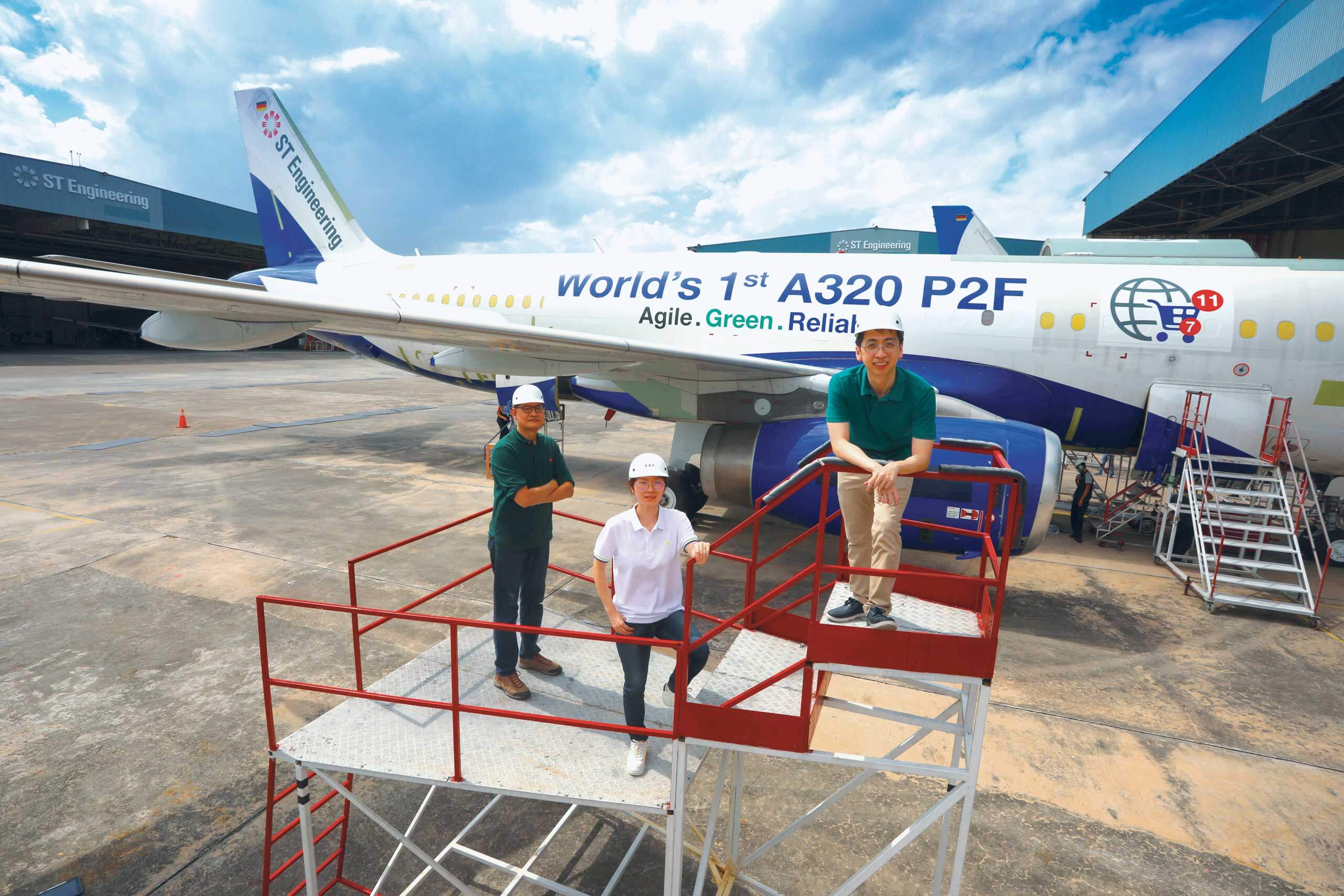
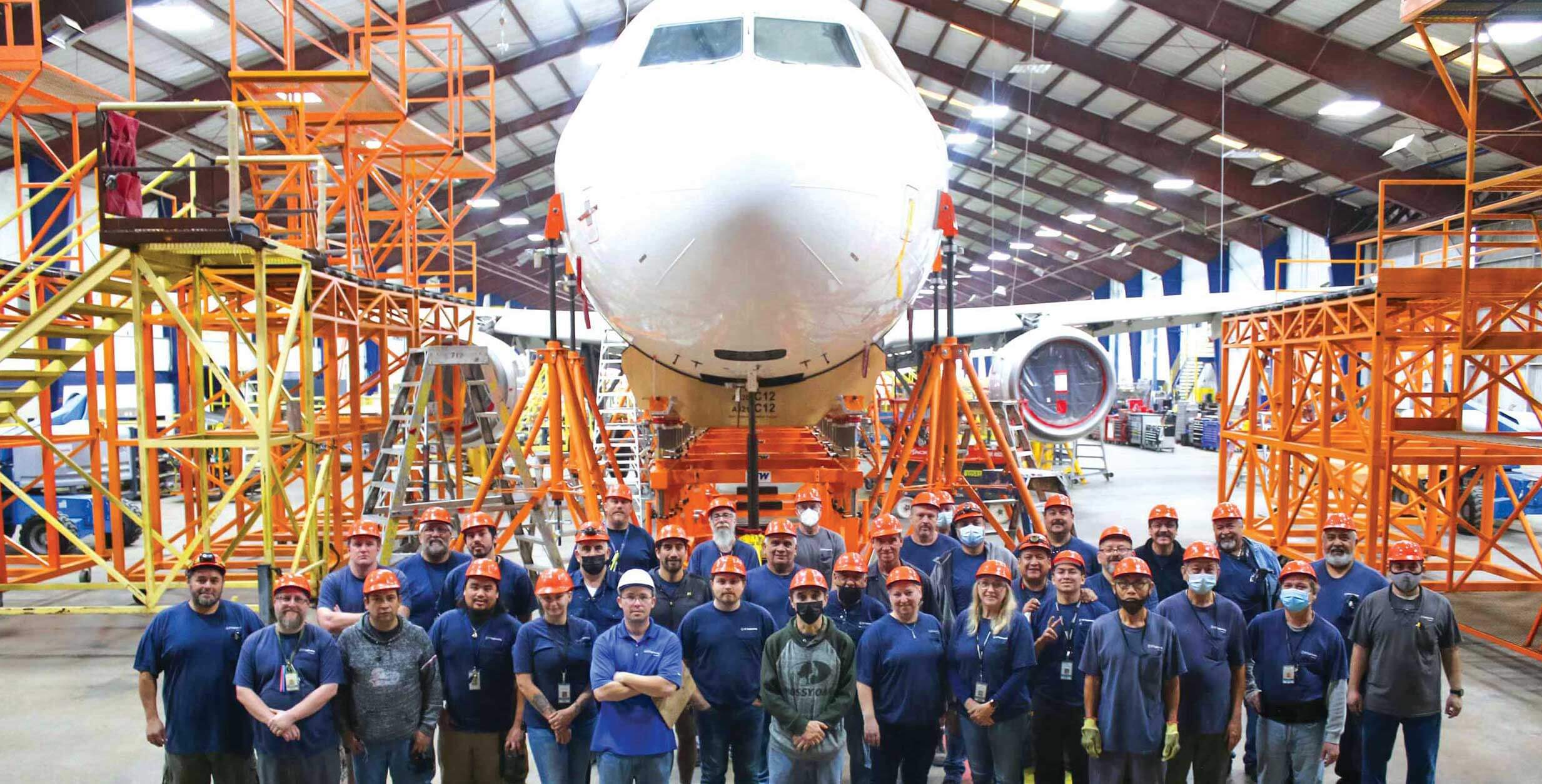
To grow our freighter conversion business, we continued to increase our capacity by setting up new modification sites in Shanghai, China and Mobile, U.S. To augment these efforts, we also entered into collaborations with Turkish Technic and Ameco, which will respectively provide third-party conversion services in Istanbul, Turkey and Chengdu, China for the A330P2F programme starting in 2023. At the time of writing this report, we announced our intent to work with Sichuan Haite Hi-Tech for it to carry out conversions for our A321P2F programme.
Drawing on our deep structural modification capabilities and engineering expertise in freighter conversions, we entered into an agreement to design and convert an aerial firefighting platform based on the Boeing 757 aircraft for Galactic Holdings. In addition to serving Galactic Holdings’ needs, moving into passenger-to-tanker conversion allows us to develop new modification capabilities and tap the aerial firefighting market, while contributing to global firefighting efforts and the protection of properties and lives.
We continued to scale new heights in our DroNet solution through new collaborations and applications. At the start of the year, we formed a consortium with Sumitomo Corporation and Skyports to provide commercial Unmanned Aircraft (UA) services for shore-to-ship parcel delivery in Singapore. We also conducted a two-week pilot offshore food delivery service via drones with foodpanda and Sentosa Development Corporation. In addition, we joined hands with the Civil Aviation Authority of Singapore to determine the maturity of new UA-related technologies and assess their value and feasibility for operations in Singapore.
Building on the strong working ties with Skyports, we invested in its Series B funding round. We will marry our complementary strengths in Advanced Air Mobility and UA systems with that of Skyports' to advance our DroNet solution globally.
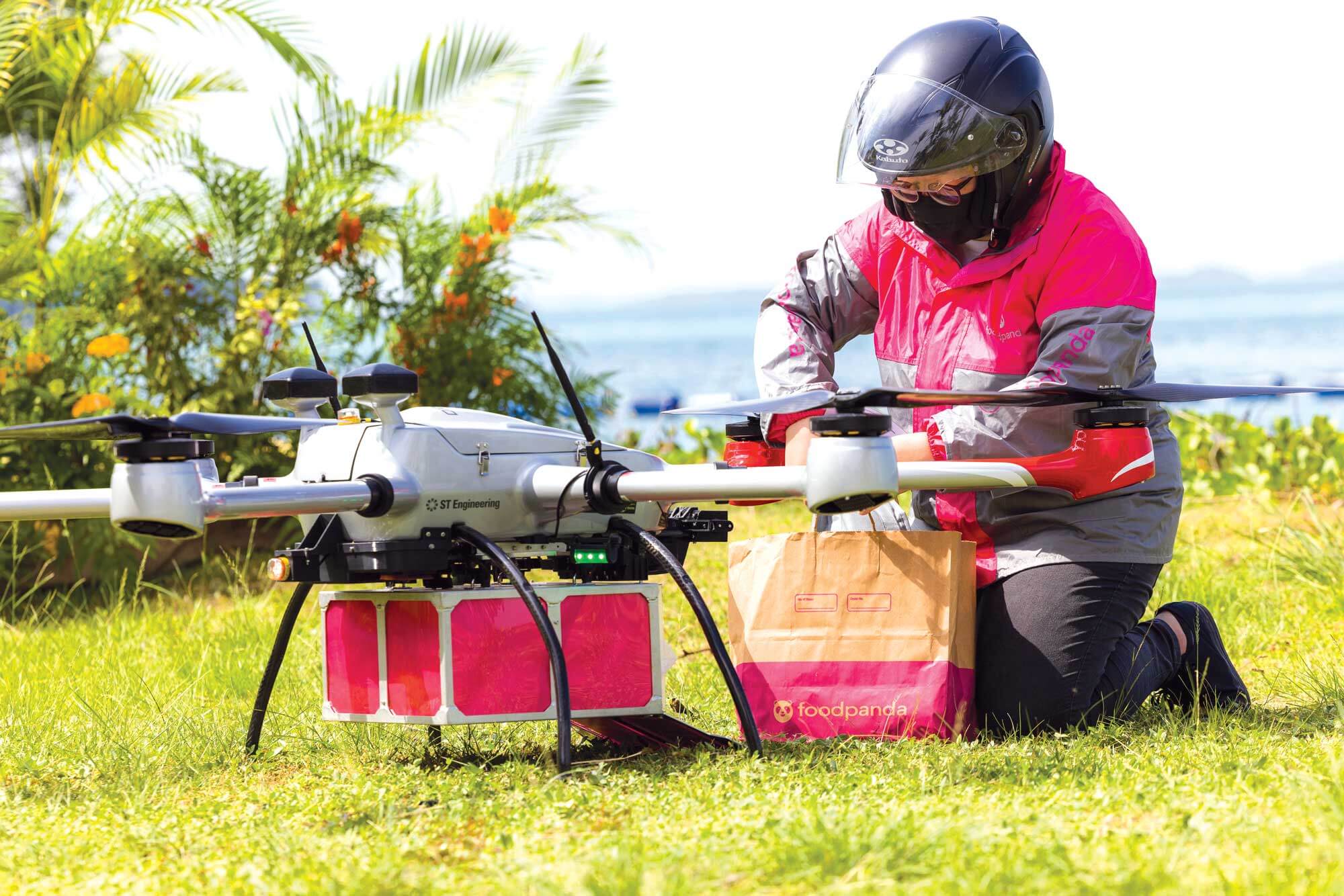

The MRO industry saw clearer skies during the year, thanks to widespread distribution of vaccines, reopened borders and pent-up demand for air travel. Returning MRO demand was reflected in the healthy utilisation rate at all our facilities, which maintained above 80% on average in 2022, with the airframe hangars operating mostly near full capacity.
We continued to foster longstanding relationships with our customers and secured a number of multi-year contracts from new and existing customers for their long-term needs. One of these customers was United Airlines, with whom we entered into an agreement to extend our heavy maintenance support to their additional narrowbody aircraft. The support will be provided at the airframe MRO complex we are developing at Pensacola International Airport. The two hangars that will be used to support United Airlines will begin construction in 2023.
A healthy level of orders for component and engine services started streaming in especially during the later half of the year, which we had anticipated given that operators will not be able to postpone MRO services indefinitely by relying on engines and components with green time left.
More airlines also started contracting for their long-time component maintenance needs. Among the new component maintenance-by-the-hour contracts we secured was one from Vietjet to support the airline’s entire fleet, one from Turkish Technic to support Turkish Airlines’ fleet of Boeing 787s, and another from China Airlines Group to support China Airlines’ A321neo and A330 aircraft as well as Tigerair Taiwan’s A320neo aircraft.
During the year, we deepened our partnership with Safran when we signed a five-year agreement with Safran Aircraft Engines to provide engine maintenance offload for the CFM56-5B and -7B engines. This multi-year agreement will allow us to meet the forecasted rise of CFM engine MRO activities as air travel further recovers from the pandemic.
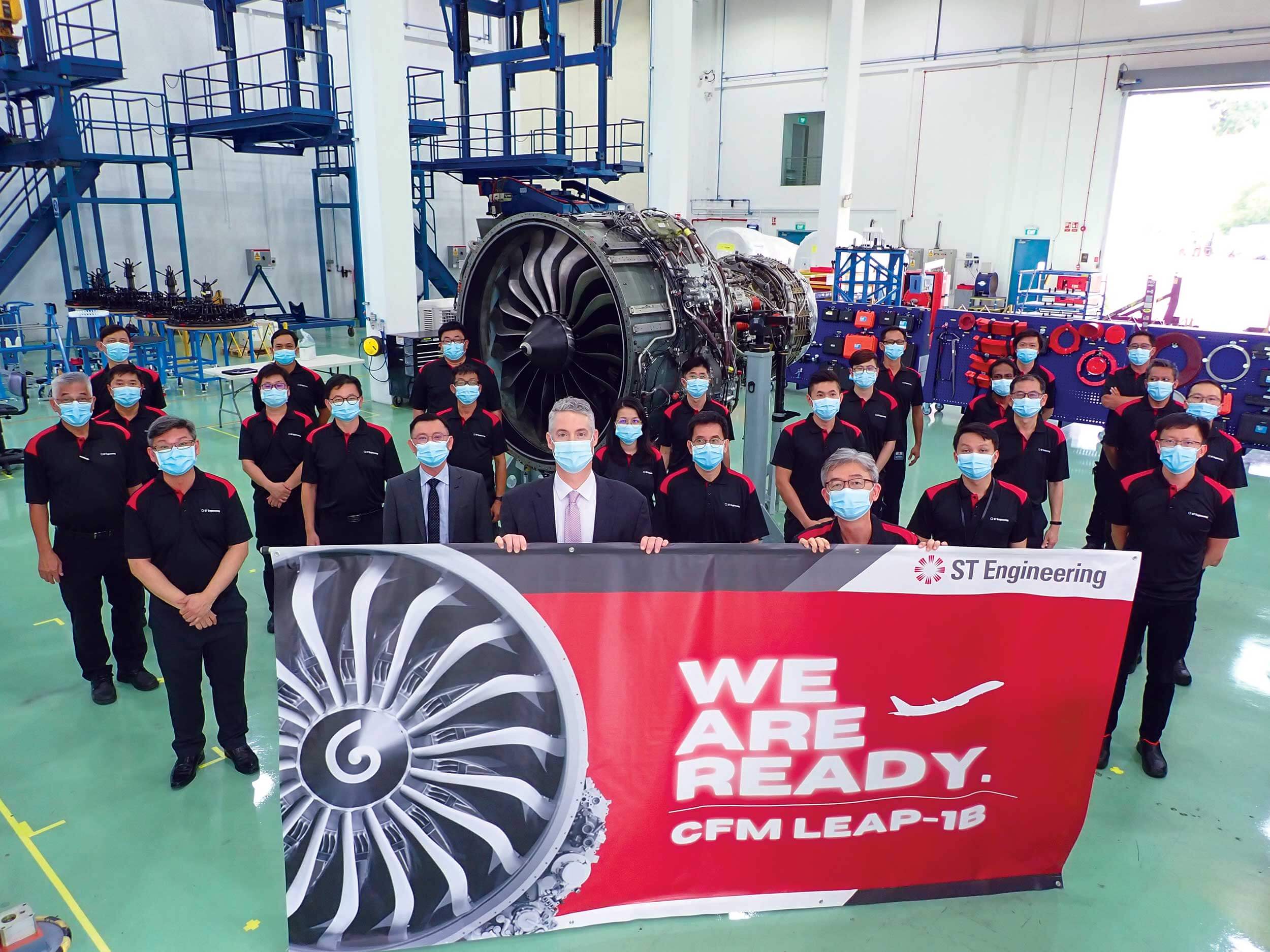
We continued to grow our aviation asset management business by building up our portfolio comprising aircraft engines, freighter aircraft and passenger aircraft. Our assets under management grew from US$1b in 2021 to US$1.8b in 2022.
We also intensified our efforts in marketing unique leasing solutions such as the bundling of aircraft leasing with MRO services. In addition, we entered into leasing partnerships with new customers, such as Raya Airways which placed a lease for four Airbus narrowbody P2F aircraft with us.
The JV we set up with Temasek for freighter aircraft leasing continued to acquire feedstock aircraft and build up its portfolio with A320/A321P2F aircraft. New aircraft assets included the world’s first A320P2F which was placed on lease with Vaayu Group.
There are encouraging signs that the aviation industry has decidedly turned the corner and is embarking on a steady growth trajectory. However, we continue to navigate the economic landscape with caution. Beyond COVID-19, there are other risks or challenges which portend some degree of disruption.
The shortage of technician talent remains a challenge that raises the cost of maintenance and threatens fleet expansion projections. The imbalance in labour supply and demand will eventually be remedied by a combination of efforts from MROs and airlines to feed the technician pipeline and make efficiency gains, although this will take time.
Supply chain disruption is another issue due to factors encompassing raw materials, logistics and inflation challenges. We expect to face continual challenges from securing freighter conversion kits to spare parts. While it is difficult to say how long these challenges will last, we are minimising impacts through rigorous efforts in diversifying our supply chain.
These challenges notwithstanding, the aviation industry is poised to be a story of recovery and growth in 2023 as flying activities continue to rise in volume. There is room for further recovery of our MRO business, especially in the areas of engine and component MRO as demand has yet to recover to the pre-pandemic level. We also expect to see strong recovery by our manufacturing business as production volume continues to improve under sustained market demand for new aircraft deliveries.
E-commerce, which is forecasted by industry experts to grow by 50 percent between 2021 and 2025, will continue to boost demand for freighter aircraft. E-commerce growth, when coupled with the replacement cycle of ageing freighters, will create a sustainable demand for dedicated freighters, long after air traffic has recovered to pre-COVID levels.
Even as we navigate the path of recovery with caution and dexterity, we will continue to build on the breadth and depth of our aerospace solutions to strengthen our value-add, while building up our talent pipeline through training programmes and investment in new initiatives to support our long-term growth plans.
Capability expansion is one key strategy to capture growth opportunities. For instance, we set up quick-turn services for the LEAP-1B engine in early 2022, and as part of our capability expansion plans to offer full MRO solutions for the engine, we are working with a testing and technology development solutions provider to develop LEAP-1B test capability at our Singapore facility. We target to have the LEAP-1B test capability ready by end-2023. Across our global facilities, we will also be introducing more and new solutions, such as nacelle MRO for more engine platforms at our nacelle manufacturing facility in the U.S. and engine MRO facility in China.
As part of our growth plans in Pensacola, U.S., we are developing an airframe MRO complex that will have a total of four hangars when completed. At the time of writing this annual report, two hangars are in operation while the last two hangars will begin construction in 2023. In addition to airframe MRO, we are also expanding our freighter conversion capacity by working with third-party conversion houses.
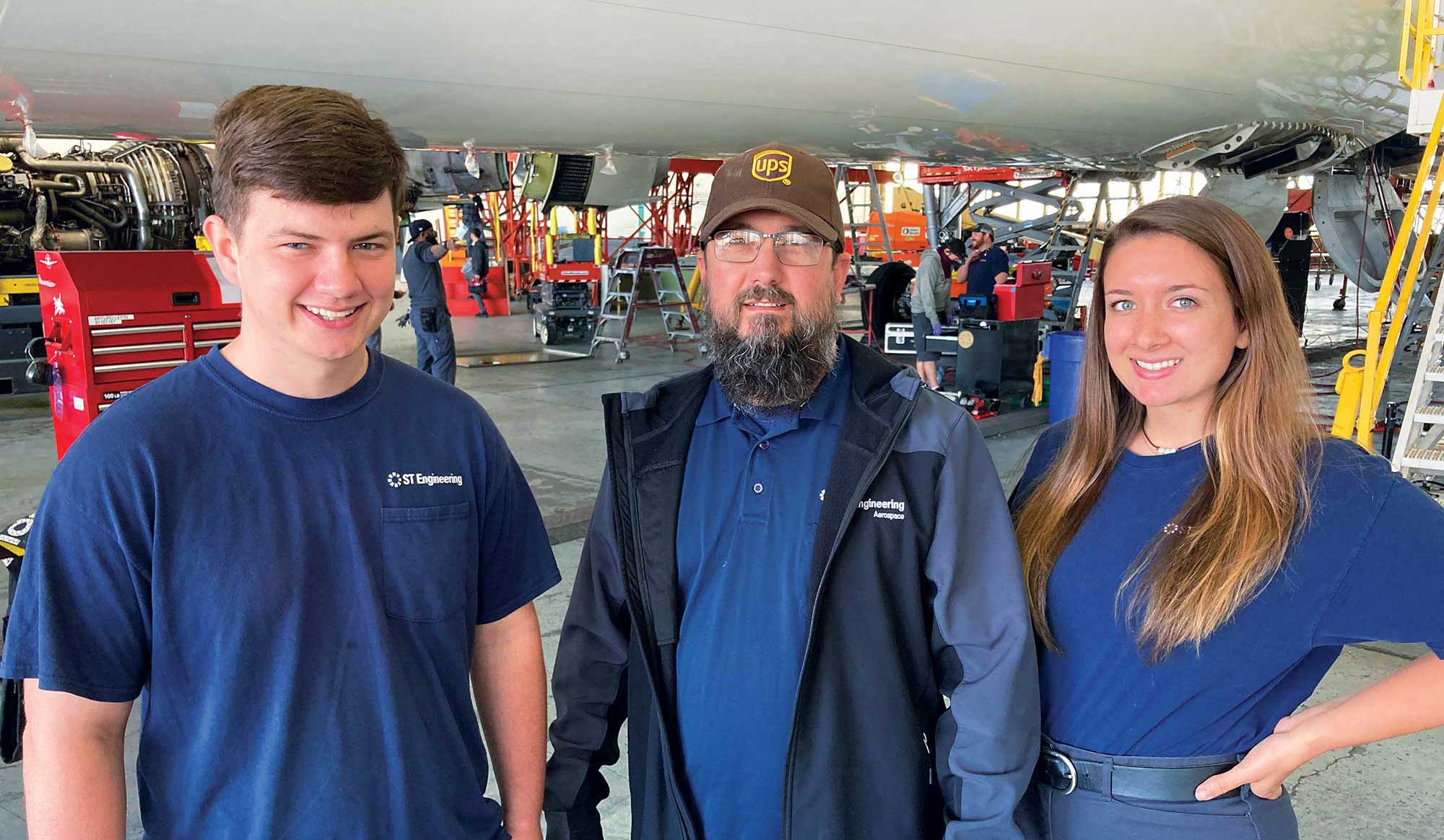
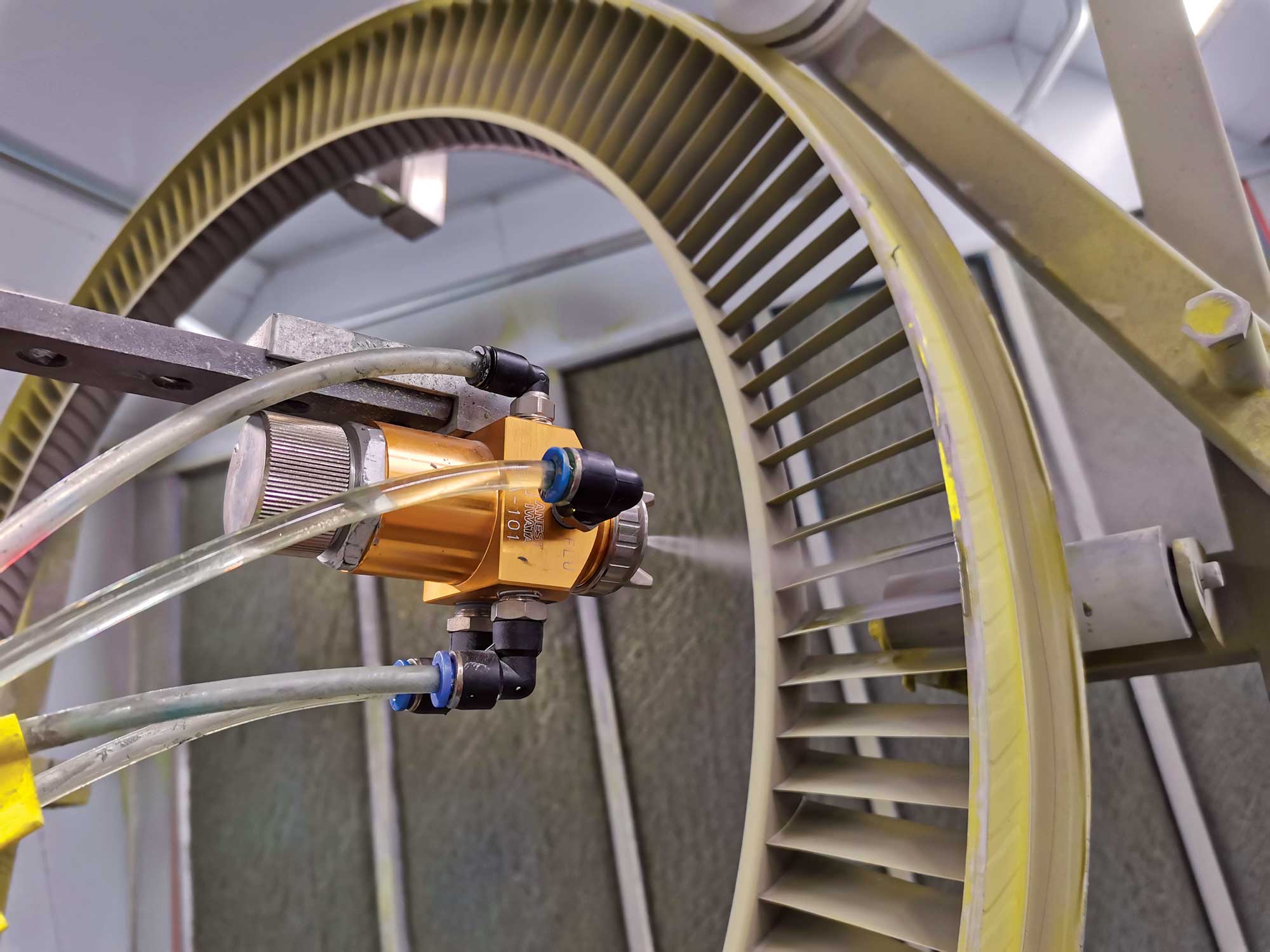
We continue to raise productivity at our MRO and manufacturing facilities through the implementation of smart technologies. Apart from developing solutions in-house, we also work with third-party service providers to use their proprietary technologies to enhance our MRO work. For instance, our San Antonio facility uses PowerFleet’s telematic solutions to provide real-time, data driven analytics and insights into its operations. At our engine MRO facilities in Singapore and Xiamen, we are leveraging GE Aviation’s Test Cell Advisor, a new data analytics service, to provide added insights into engine performance analysis during testing.
To effectively reduce our carbon footprint, we are joining hands with industry partners to develop robust and viable solutions. For instance, we partnered Safran Helicopter Engines through an MOU to study the use of Sustainable Aviation Fuel (SAF) to see how we can assist helicopter operators in their transition towards the use of SAF. To make our engine MRO facilities greener and more efficient, we are working with Calspan Aero System Engineering to incorporate energy and fuel-efficient technologies into our engine test cells. Moving forward, we will make even greater efforts to enhance our operations with sustainability features to further meet our sustainability goals and those of our customers.

